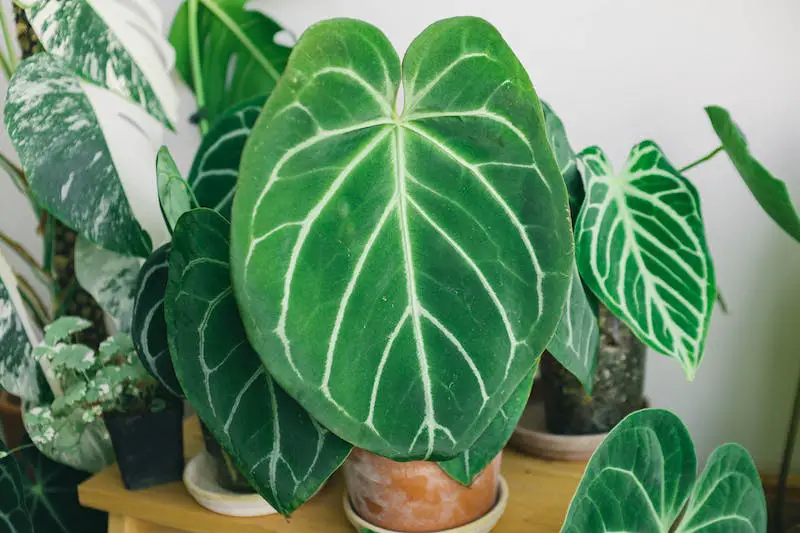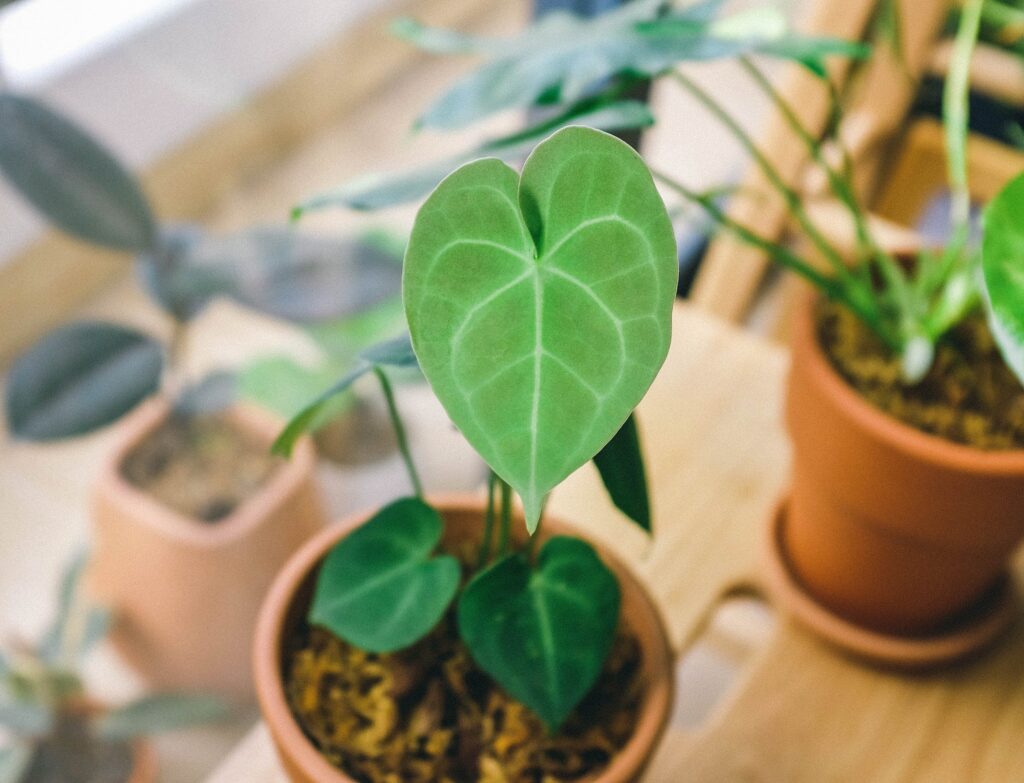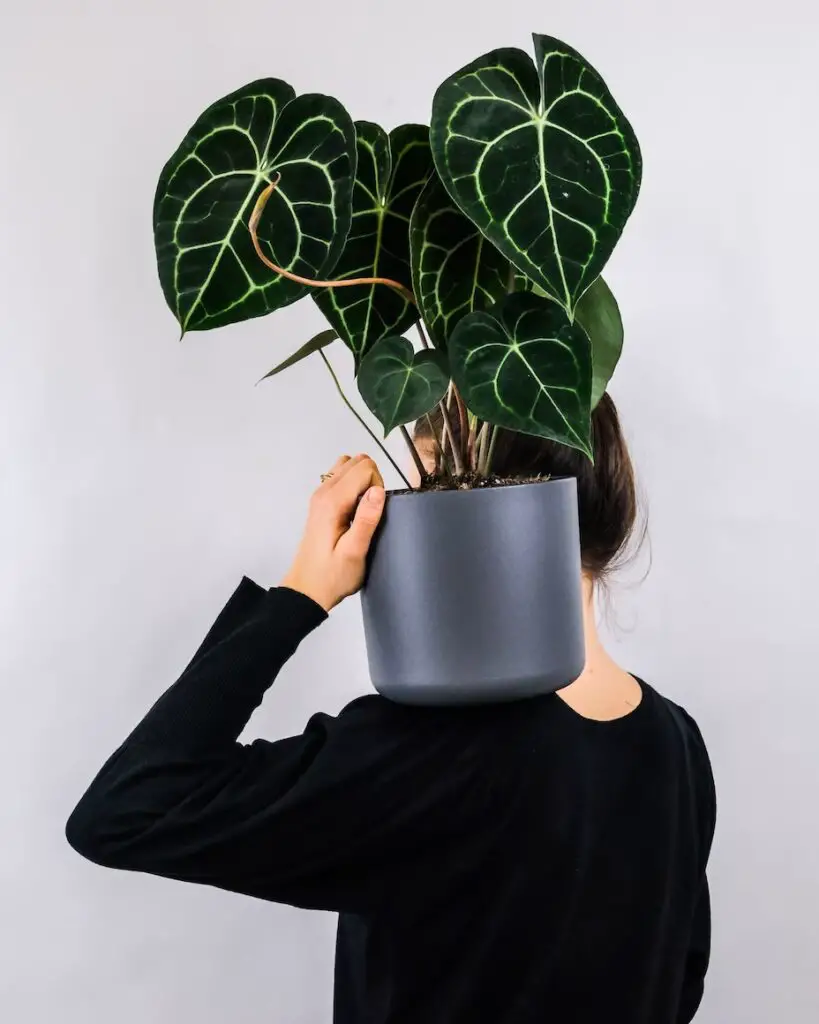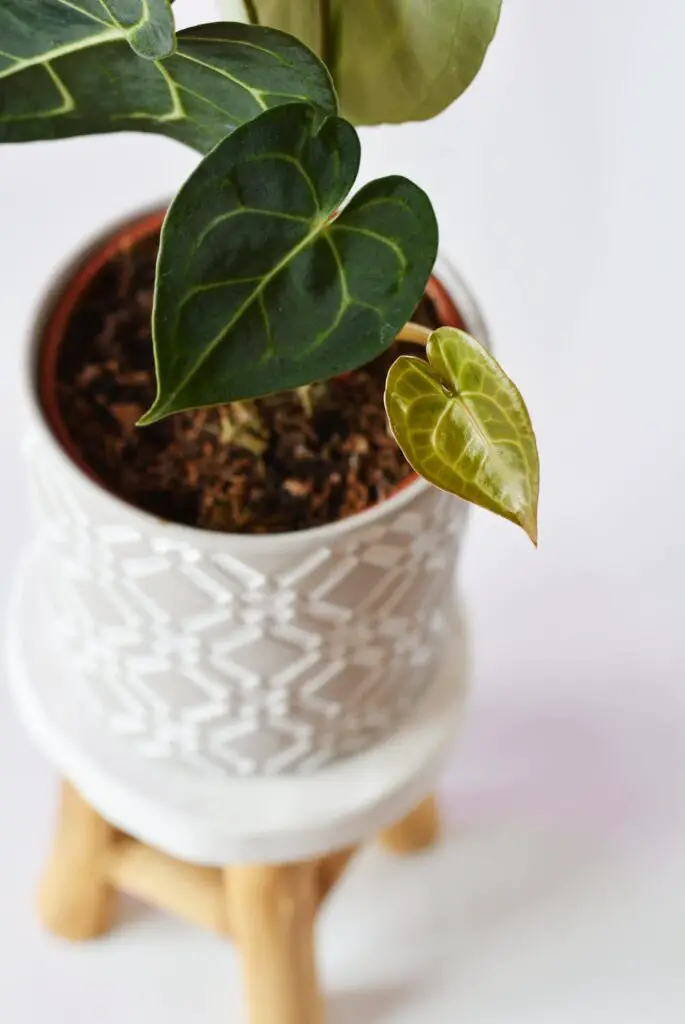
Anthurium clarinervium is a plant that has recently become popular among plant enthusiasts for its stunning appearance and unique characteristics. This tropical plant is native to Mexico and belongs to the Araceae family, which is the same family that includes the popular houseplant, the Peace Lily.
Anthurium clarinervium is a relatively small plant, growing to a height of around 1-2 feet (approximately 30-60 centimetres). The leaves of the plant are the most striking feature and are what make this plant so desirable. The leaves are heart-shaped and are usually between 4-6 inches long (approximately 10-15 centimetres). They have a beautiful velvety texture and are a deep, glossy green color with prominent white veins running through them. The veins are what give the plant its name, as “clarinervium” means “clear veins” in Latin.
Table of Contents
Maintenance and care
In addition to its striking appearance, Anthurium clarinervium is also known for being relatively easy to care for. It is a low-maintenance plant that can thrive in a variety of environments. However, there are a few key things that you should keep in mind if you want to keep your Anthurium clarinervium healthy and happy.
Light
Anthurium clarinervium prefers bright, indirect light. Direct sunlight can scorch the leaves, so it’s best to keep the plant in a location where it will receive filtered sunlight. A north-facing window is a good option, as it will provide bright, indirect light without exposing the plant to direct sunlight.
Water
Like most plants, Anthurium clarinervium needs to be watered regularly, but it’s important not to overwater it. Overwatering can cause the roots to rot and can ultimately kill the plant. It’s best to water the plant when the top inch of soil is dry to the touch. You should also avoid letting the plant sit in water, as this can also lead to root rot.
Humidity
Anthurium clarinervium is a tropical plant and thrives in high humidity environments. You can increase the humidity around the plant by placing a tray of water nearby or by using a humidifier. Alternatively, you can mist the leaves with water once or twice a day to help keep the humidity levels high.
Soil and fertilisation
Anthurium clarinervium prefers well-draining soil that is rich in nutrients. A mix of potting soil, perlite, and peat moss is a good option. You should also make sure that the pot you use has drainage holes to help prevent overwatering.
The plant should be fertilised every 2-3 months during the growing season, which typically runs from spring to fall (autumn). Use a balanced, water-soluble fertiliser that is formulated for indoor plants. Be careful not to over-fertilise your plant, as this can cause damage to the roots and leaves. Before fertilising, water the plant thoroughly to prevent the fertiliser from burning the roots. During the dormant season, reduce or stop fertilising, as the plant requires less nutrients during this time. Proper fertilisation will help to promote healthy growth and beautiful foliage on your Anthurium clarinervium.
Propagation
Anthurium clarinervium can be propagated through division or stem cuttings. To propagate the plant through division, you should carefully remove the plant from its pot and separate the roots into smaller sections. Each section should have its own stem and several leaves. To propagate the plant through stem cuttings, you should cut a stem from the plant and place it in water or moist soil. Within a few weeks, the stem should start to produce roots.


Pests and Diseases
Anthurium clarinervium is relatively resistant to pests and diseases. However, like all plants, it is still susceptible to a few common problems. The most common pests that can affect Anthurium clarinervium are spider mites, mealybugs, and scale insects. You can control these pests by wiping the leaves with a damp cloth or by using an insecticidal soap. The most common diseases that can affect Anthurium clarinervium are root rot and leaf spot. To prevent these diseases, you should make sure to avoid overwatering the plant and to keep the leaves dry.
Repotting the Anthurium clarinervium
Repotting an Anthurium clarinervium is a straightforward process. The plant should be repotted once every two years or when it outgrows its current pot. Start by carefully removing the plant from its current pot and gently shaking off any excess soil. Inspect the roots and remove any that are dead or damaged. Choose a new pot that is only slightly larger than the current one and has drainage holes. Fill the bottom of the pot with fresh, well-draining soil, and place the plant in the pot, ensuring that the root ball is centered. Fill in the space around the roots with soil and gently press down to firm it up. Water the plant thoroughly and place it in a bright, indirect light location. Allow the plant to settle in for a few days before resuming its normal care routine.


Can the Anthurium clarinervium grow flowers?
Yes, an Anthurium clarinervium is capable of producing flowers, but it is not typically grown for its flowers. The flowers of the Anthurium clarinervium are small and inconspicuous, and they usually appear on a spadix surrounded by a spathe. To encourage your Anthurium clarinervium to flower, you should provide it with bright, indirect light, high humidity, and balanced fertiliser during the growing season. However, if your plant does not produce flowers, it can still be a beautiful and rewarding addition to your indoor garden because it is most often grown for its striking foliage with prominent white veins.
Toxicity
Anthurium clarinervium, like many other members of the Anthurium family, is toxic to both humans and animals if ingested. The plant contains calcium oxalate crystals, which can cause irritation and swelling of the mouth, tongue, and throat. In severe cases, ingestion can lead to difficulty breathing and even death.
It is important to keep Anthurium clarinervium out of the reach of children and pets, and to wash your hands thoroughly after handling the plant. If you or someone you know ingests any part of the plant, seek medical attention immediately. If your pet ingests any part of the plant, contact your veterinarian right away.
While Anthurium clarinervium is a beautiful and unique plant, it is important to handle it with care and be aware of its potential toxicity. By taking the necessary precautions, you can enjoy the beauty of this plant while keeping yourself and your loved ones safe.
Conclusion
In conclusion, the Anthurium clarinervium is a unique and striking plant that can make a beautiful addition to any indoor garden. Its large, velvety leaves with prominent white veins add a touch of elegance and sophistication to any space. However, this plant requires specific care and maintenance to thrive. To keep your Anthurium clarinervium healthy and happy, make sure to provide it with the right growing conditions, including bright, indirect light, high humidity, and well-draining soil. Additionally, be mindful of watering, fertilising, and repotting your plant as needed. With proper care, your Anthurium clarinervium can continue to grow and thrive for many years to come, adding beauty and grace to your home or office.

Where To Buy Anthurium Clarinervium – Bescord
Friday 27th of May 2022
[…] Regular pruning helps to maintain the plant's appearance and improve its growth. The Anthurium Clarinervium plants have sturdy stems and thick leaves. These plants can survive even when only 4 leaves are left on them. But it is not advisable to prune the plant vigorously as it can cause damage. via […]
HeleSwa
Monday 14th of June 2021
cialis dosage cialis great price cialis
GanceAsd
Monday 14th of June 2021
cialissuperactive com cialis for women side effects cialis order online
coellGtv
Monday 14th of June 2021
buy prescription drugs canada viagra generic canadian pharmacy quality rx pharmacy hyde park ma
coellHtf
Thursday 10th of June 2021
buy original cialis cialis facts cialis effect on female